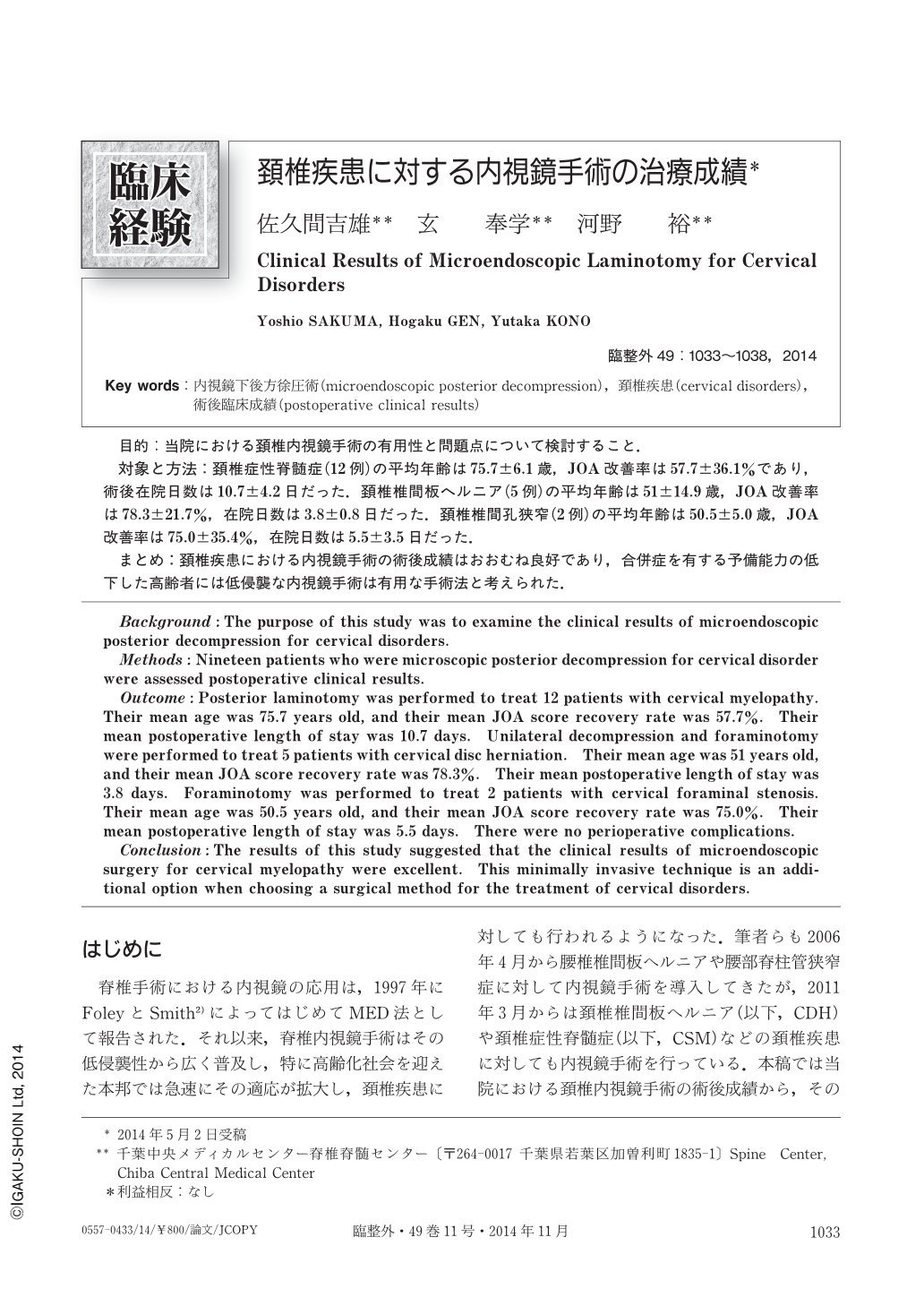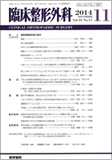Japanese
English
- 有料閲覧
- Abstract 文献概要
- 1ページ目 Look Inside
- 参考文献 Reference
目的:当院における頚椎内視鏡手術の有用性と問題点について検討すること.
対象と方法:頚椎症性脊髄症(12例)の平均年齢は75.7±6.1歳,JOA改善率は57.7±36.1%であり,術後在院日数は10.7±4.2日だった.頚椎椎間板ヘルニア(5例)の平均年齢は51±14.9歳,JOA改善率は78.3±21.7%,在院日数は3.8±0.8日だった.頚椎椎間孔狭窄(2例)の平均年齢は50.5±5.0歳,JOA改善率は75.0±35.4%,在院日数は5.5±3.5日だった.
まとめ:頚椎疾患における内視鏡手術の術後成績はおおむね良好であり,合併症を有する予備能力の低下した高齢者には低侵襲な内視鏡手術は有用な手術法と考えられた.
Background:The purpose of this study was to examine the clinical results of microendoscopic posterior decompression for cervical disorders.
Methods:Nineteen patients who were microscopic posterior decompression for cervical disorder were assessed postoperative clinical results.
Outcome:Posterior laminotomy was performed to treat 12 patients with cervical myelopathy. Their mean age was 75.7 years old, and their mean JOA score recovery rate was 57.7%. Their mean postoperative length of stay was 10.7 days. Unilateral decompression and foraminotomy were performed to treat 5 patients with cervical disc herniation. Their mean age was 51 years old, and their mean JOA score recovery rate was 78.3%. Their mean postoperative length of stay was 3.8 days. Foraminotomy was performed to treat 2 patients with cervical foraminal stenosis. Their mean age was 50.5 years old, and their mean JOA score recovery rate was 75.0%. Their mean postoperative length of stay was 5.5 days. There were no perioperative complications.
Conclusion:The results of this study suggested that the clinical results of microendoscopic surgery for cervical myelopathy were excellent. This minimally invasive technique is an additional option when choosing a surgical method for the treatment of cervical disorders.

Copyright © 2014, Igaku-Shoin Ltd. All rights reserved.


